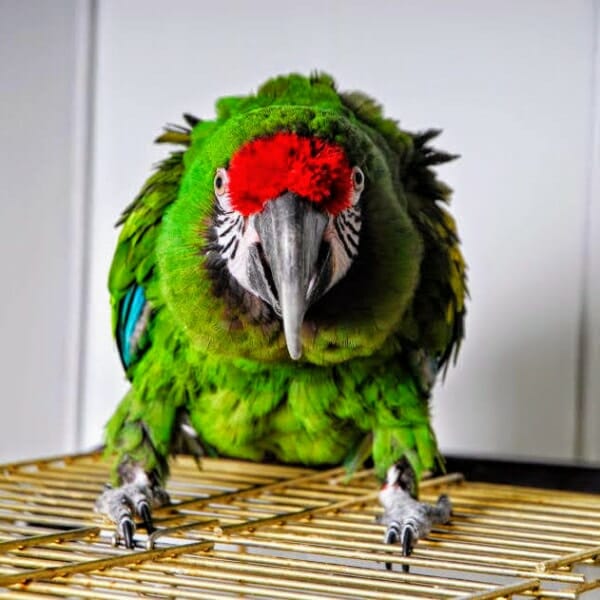Last Updated on by Catherine Tobsing
Hypothetical – a 21st-century genie sits down next to you on a park bench. He looks pretty normal and explains that the whole genie thing has evolved along with modern society.
The dapper young lad named Gene (really?) goes on to say;
“The new rules are that you still get three wishes but “me”, the genie decides what they are. It’ll be fun.
Wish number one is from this point forward you will have the ability to fly.
It gets better.
Animals that fly like birds can see the ultraviolet spectrum of light, but that’s boring for mammals.
Wish number two is X-ray vision. Now you can see what people look like naked under their clothing”.

You’re thinking “This is great I can’t wait to leap a tall building in a single will bound AND see people naked under their clothing”
With a huge grin, the genie goes on;
“Wish number 3 three is always the best wish. You can never leave your home again AND will spend at least 12 hours per day in a closet jail with erratic light cycles.
Oh yeh, food – the food is the funniest part”.
Gene was getting downright giddy.
“You get to eat colored morsels that resemble the clay you squeezed out of a Play-Doh set as a child – forever”.
Magically now sitting next to Gene on the worn-out sofa in the living room of your miserable little bungalow, on a cul-de-sac (meaning the only women you will ever see naked are ones you don’t ever want to see naked).
“Did I mention I was a comic genie?
Have a nice life and try to stay normal for the next 50 years. A professional is on standby should you require injections of nefarious fluids that will fix anything that ails you.
Nice place you got”.
Alone (you can fill in the blank on how Gene made his exit), reality rapidly sunk in.
You found yourself flying in circles, bumping your head on the bungalow’s 8-foot ceiling with purple sunlight streaming through the big front room window, making your headache – worse.
All you can think of is “This is gonna be rough”.
Moral? Learn to speak bird.
A couple of weeks ago I wrote about a drug called Lupron used by avian veterinarians to reduce prolific egg-laying in birds as well as reduce aggression in male birds.
A couple of women on Facebook were astounded by “How dare I” talk about a drug (Lupron) that caused young women’s tooth enamel delamination, bone degeneration, fibromyalgia, and chronic back pain to name a few symptoms (by the way did I mention that the manufacturer of the drug lost a lawsuit and had to award $852 million to a plaintiff?) 5 – 10 years after taking the drug.
Anyway, they felt that my unscientific research would in no way hamper them in seeking to inject THEIR birds with Lupron while they pronounce it 100% safe in all avian applications – it’s a miracle Lord.
I make no apologies for this. It’s an OPINION of somebody who doesn’t have the alphabet after his name. Ironically not one veterinarian came out in defense of the drug.
What’s important is that you know you have options available and I am saying that Lupron should be your very last line of defense despite what any veterinarian will tell you.
Veterinarians make money on $50 Lupron injections. Not advising on how 25 cents worth of light might solve the prolific egg-laying problem with zero side effects.
Don’t get me wrong. Veterinarians have a valuable place in avian medicine when it comes to a bird’s overall health.
I like seeing blood workups. I like seeing a physical examination. I like seeing X-rays. Yet far too frequently I hear, read, or see the self-mutilating bird who’s been to the vet numerous times for a series of injections.
Along with prolific egg-laying, feather mutilation is rarely seen in the wild. If you want to start fixing a bird begin with its birdcage habitat, nutrition, and delivery of said nutrition. Couple that with proper lighting and we have a good start.
Raise your hand if a veterinarian has said these or similar words. It’s not their fault. They have been blindsided by behaviors now prevalent because of the soaring popularity and misunderstanding of captive bird behavior.
By creating and understanding the relationship between veterinarians, pet bird keepers, and captive bird environmentalists (I just made that up), many of these behavioral and physical issues can be fixed.
This also goes beyond talking to “bird behaviorists”. Behavior modification can be effective but not persistent without looking holistically at birdcage habitat, nutrition, nutrition delivery system (food bowls versus enrichment opportunities), home environment, flight, lighting, and human flock.
You can’t alter a bird’s negative behavior with a “better pellet”, an injection, a class, or a seminar.
It’s a BIRD! It thinks (pigeons can process thought 3 times faster than humans) but not like a mammal.
Tactic I
Veterinarians don’t make money on your electric bill by exposing your bird to 72 hours of constant light which could shut down your bird’s reproductive system.
We wrote about how effective this was with our own cockatiel Popcorn and offer FAQ’s on the benign process
Tactic II
Simply having lighting over birds cage that is on 12 hours and off 12 hours can make all of the difference in your bird’s behavior.
A woman wrote with the following question. If the bird isn’t in the cage all day how is the 12 hour light cycle effective?
First I’m almost certain that I never answered her (I apologize). The question got lost in one of the many venues that I get problems posed to me. The big kids get a fire hose of data – I get a hundred garden hoses of noise I must pick through.
But it’s a great question. Usually, when the light comes on over the bird in its cage in the morning, it signals the beginning of the day. We then try to put Peaches in her cage five or ten minutes before the light goes out signaling to her the end of the day.
This very simple technique can help your bird reduce its hormonal activities by keeping its circadian clock set at the proper time.
A bird’s circadian clock is more accurate than a Rolex.
Caveat: when using a timer do not respect daylight savings time. Your bird doesn’t understand it. It will be confusing. Let the timer run on the same 12 hour light cycle all year long.
Tactic III
Avian nutritional thinking has evolved over the past decade and many avian veterinarians believe that soy could be a major contributor to enhanced hormonal behavior in birds.
If your bird is feather plucking, screaming or performing hormonal “posturing” which you’ll know when you see it, you may want to consider eliminating soy from their diet which may be triggering food allergies.
Tactic IV
For the most part, we keep our birds locked up with little or no exercise having chopped off the wings and then wonder why they act “weird” to the introduction of new food.
Why they exhibit no interest in new foods is no surprise when they have not exerted any caloric-burning activity for the day.
By introducing foraging & enrichment activities, you will enable a bird’s normal way of eating while providing some exercise.
You can spend your Sunday afternoon making chop for a week or spend 2 minutes building a foraging box and spend Sunday afternoon watching romantic movies with your honey
Tactic V
Don’t forget to weigh your bird at least twice a month – rapid changes in weight in either direction are your “first responder” line of defense to define the perfect time to visit your vet rather than waiting until it’s too late. A sick bird can also be a cranky bird.
Written by Mitch Rezman
Approved by Catherine Tobsing
Author Profile
Latest entries
 The Traveling BirdJune 26, 2025Can You Name 5 Parrot Species That Are Living Wild in the USA?
The Traveling BirdJune 26, 2025Can You Name 5 Parrot Species That Are Living Wild in the USA? Bird BehaviorJune 26, 2025How is it Parrots Are Problem Solvers Social Animals and Even Use Tools?
Bird BehaviorJune 26, 2025How is it Parrots Are Problem Solvers Social Animals and Even Use Tools? Bird & Parrot AnatomyJune 25, 2025How a Tiny Chemical Modification Makes Parrots Nature’s Living Paintings
Bird & Parrot AnatomyJune 25, 2025How a Tiny Chemical Modification Makes Parrots Nature’s Living Paintings PigeonsJune 20, 2025How Do Parrots Thrive in Cities Outside Their Native Habitats?
PigeonsJune 20, 2025How Do Parrots Thrive in Cities Outside Their Native Habitats?




Patricia Fear
5 Mar 2017My U2’s cage is 7 feet high and domed. My ceiling is about 8 feet high. No room. He is superb at unscrewing, unlocking, and disassembling just about anything. He was probably a carpenter in a previous life. Also, he needs a cover at night if I don’t want to wake up with the sun. Now, how to I attach the light?
WindyCityParrot
6 Mar 2017Hi Patricia
I would mount one possibly 2 leds to the ceiling or suspended from the ceiling parallel with the sides of the cage out of reach of the bird
losninos
11 Mar 2017My birds get entirely natural lighting. They are kept in a heated or cooled, as needed, 4 season, bright sun porch. They get the same amount of light as if they lived outside. They go to bed on their own when it’s dark and wake up when it’s light. Should I be worried about this?
WindyCityParrot
13 Mar 2017yes – it’s not about the “quality” of the light, it’s about the “duration” of the light being meticulous tracked by a birds pineal gland and processed by it’s circadian clock. Most parrots are from equatorial regions on earth expecting 12/12 hours of light and darkness.
North American light cycles disrupt their circadian clock which can at the simplest point make them feel good about them selves or not losninos
Julinka
7 Jul 2024I wish I had known about this when I had my hormonal white fronted Amazon parrot. Two different vets, neither mentioned the 12 hour light cycle. I asked one of the avian vets about getting a light and he said if there is a lot of light in the room it wouldn’t make a difference. I had done all the other things and she did destroy her feathers to the point she was not able to fly any longer. She didn’t pull them out, she chewed on them. She was a brilliant talker and probably the pet I got closest to in my life, one in a million.